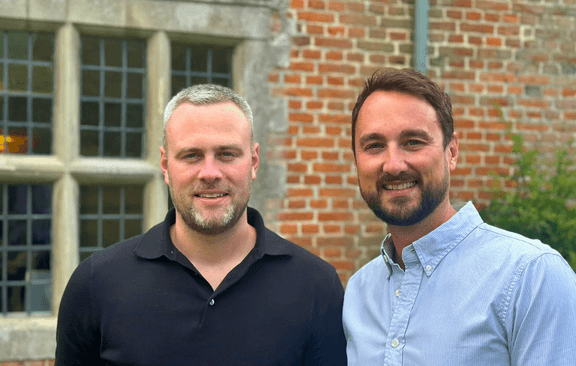Data Center News - Issue 7

By Alana Cumming
20 Jul 2022
8 min read

Welcome to the seventh edition of Harper Harrison’s Data Center News wrap-up. We know how busy many of the industry leaders are in this thriving sector, so we thought we would highlight some of the months industry news into a bite size format.
7th Edition
Data Center construction has continued to surge leaving developers scrambling to add capacity to meet customer demands. NTT and Aligned have launched new facilities in Oregon, Illinois, and Utah respectively. Skybox have acquired a new facility in Illinois and Singaporean investment firm Mapletree have bought one of Bank of Americas facilities on the outskirts of Richmond, Virginia.
There have been several strategic hires across the industry. Andrew Riela joined QTS Data Centers as Director of Development and Enchanted Rock brought in data center veteran John Gould as Chief Revenue Officer. Spencer Lecheler joined Stack Infrastructure as SVP of Operations and over on the General Contracting side Yates Construction hired Ian Mincey as Division Manager to lead their Mission Critical group. Yates Construction are recognized as industry leaders and innovators within the High-Tech Manufacturing sector.
Industry Insights
Data Center construction is continuing to surge amid supply constraints in top markets. Record breaking leasing activity is driving developers to add capacity. Buddy Rizer,
Executive Director of Economic Development for Loudon County said; “We’re looking at over 6 million square feet of new data center space” (Data Center Frontier, 2021).
Low vacancy rate is a good indicator of a strong market with development potential and according to Cushman & Wakefield’s 2021 data center report many of the hot data center markets are sitting at sub-10 percent vacancy. Certain primary operators, particularly in Northern Virginia often attempt to have some vacant space that allows immediate deployments for clients in need, and this is driving significant development activity.
Google also announced they plan to spend $7bn on US real estate this year and this will be spread across data centers and offices. Although the investment is still huge, it’s declining when compared to previous years. Google have also expressed their commitment to California at a time when many tech companies have made the move to Texas to benefit from tax benefits.
Microsoft to build another Data Center in San Antonio, Texas.
Microsoft have applied to build another data center in San Antonio and will see the company spend a further $140m at the existing Texas research campus
Construction is expected to start in May and finish by February 2022. Philips Architecture are listed as the design firm for this project. Microsoft have a large presence in the city and plans to spend $1bn building one million square feet of data center space (Data Center Dynamics, 2021).
Flexential Partners with Legacy Investing, LLC
Flexential have partnered with Legacy Investing for the development of a new facility in Hillsboro, Oregon. The new data center will enhance Flexential’s position as a leader in the growing Portland data center market which has the second highest growth rate in North America. Legacy Investing focus on mission critical real estate, future workplaces, and life sciences (PR Newswire, 2021).
Facebook expands Papillion data center again
Facebook continued their 2021 growth in the US by announcing they are to add one million sq.ft. to their Papillion campus, another $400m of investment taking total investment in Nebraska to almost $1.5bn. The expansion will add 100 new operational jobs with up to 2,000 temporary construction jobs. The social network giant have been on a massive expansion spree, announcing eight new data centers in Prineville, Los Lunas, Huntsville and Eagle Mountain (Data Center Dynamics, 2021)
Facebook will add two more data centers at $2 billion Prineville complex
Facebook have announced plans to add two huge facilities in central Oregon town Prineville. The $2bn complex will have 11 data centers when Facebook finish the expansion in 2023. The social media giant built their first facility in Prineville in 2009 and it is their largest complex and will be nearly 46 million square feet once complete (The Oregonian, 2021).
Skybox and Prologis Show How Investors Are Betting on More Growth in Data Center Demand
Skybox have partnered with Prologis to retrofit an existing warehouse into a new data center facility. Prologis are one of the largest logistics developers in North America and the new partnerships is a great example of how data center developers are innovating to keep up with demand. The warehouse is 189,000 square feet and has been vacant since 2020. Renovations will include adding power generators, drainage systems, water detention infrastructure and facade enhancements (Data Center Dynamics, 2021).
Stack Infrastructure Closes $400 Million Dollar in Latest Round of Structured Debt Financing
Stack Infrastructure are one of the fastest-growing private data center operators in the US and will use the capital to execute several client driven expansions. Just over five months since its previous issuance raising $325 million and fresh off a series of new executive hiring, partnerships, facility openings, and expansions, STACK is once again positioning itself to continue its record-breaking 2020 leasing activity (Stack Infrastructure, 2021).
Conclusion
As we approach the end of H1 the data center industry is showing no signs of slowing down and everyone involved is continuing the relentless pursuit to keep up with global demand. In this month's Q&A Brian Pung of JE Dunn has made some fantastic points on how we can overcome the ever-present talent struggle. This topic is more relevant now than ever before so this one is well worth a read.
60 Seconds with... Brian Pung
How did you get into the Data Center industry?
“Honestly, I got into the Data Center industry by accident. 10 years ago, I relocated to Portland to close out a Life Science building project. When I came back to Kansas City, I was informed that we were pursuing a Data Center out in the Portland market and I was tasked to lead the buy-out of that job. Things went well, and I continued with more and more data center projects, ultimately leading me to where I am now, the National Director for JE Dunn’s Mission Critical Preconstruction group.”
What makes the Data Center sector unique?
“I have to say the talented individuals we work with on a daily basis. I’m always amazed by how the engineers, operators and construction teams merge together and overcome seemingly impossible situations. I have been in the mission critical industry for over 10 years, and the only constant is that these facilities continue to be built faster and more economically from a cost per watt standpoint. This couldn’t happen without the continued innovation from the talented individuals in our market sector.”
What 3 tips would you give to someone just getting started in the industry?
- “Be flexible - Change is part of the tech world we live in and with the constant evolution of more efficient equipment and servers, mid-construction design changes should be expected—not a surprise.”
- “Focus - on the end user’s priorities. Sometimes decisions will be made that don’t make sense at face value, but once the broader priorities are understood i.e., speed to market, construction costs, operational efficiency you can tailor your recommendation towards the owner’s needs.”
- “Appreciate your impact - Understand that while our buildings may not be making the front cover of Architectural Records magazine, what we do is making a major impact on society and the lives of people around the world.”
What do you think will be the biggest challenge in the next five years for the Data Center market?
“Workforce availability. The schedules in this market become more and more aggressive, and this forces construction to have steep manpower curves with higher peak workforce. More often, we are seeing trade partners wanting to bid on projects — but ultimately declining because they do not have the manpower available to achieve the accelerated schedules.”
How do you believe we can overcome this challenge?
“I believe there are two main areas of focus to combat this growing challenge. The first being continued emphasis on left-shifting the on-site production to off-site fabrication to reduce the manpower peak onsite. Fabrication in an off-site facility can happen concurrently with the construction onsite, thus eliminating the steep manpower ramp ups on site.”
“The second area of focus is more specific to general construction, and that is to educate the younger students on the benefit on a career in the construction industry. The older generation of workers in our field are retiring at a faster rate than new workers are entering. As an industry, we need to put more of a focus on engaging and educating students on the benefits of entering the construction field.”
Issue 7 Round-Up
As we approach the end of H1 the Data Center industry is showing no signs of slowing down and everyone involved is continuing the relentless pursuit to keep up with global demand. In this months Q&A Brian Pung of JE Dunn has made some fantastic points on how we can overcome the ever-present talent struggle. This topic is more relevant now than ever before so this one is well worth a read.










